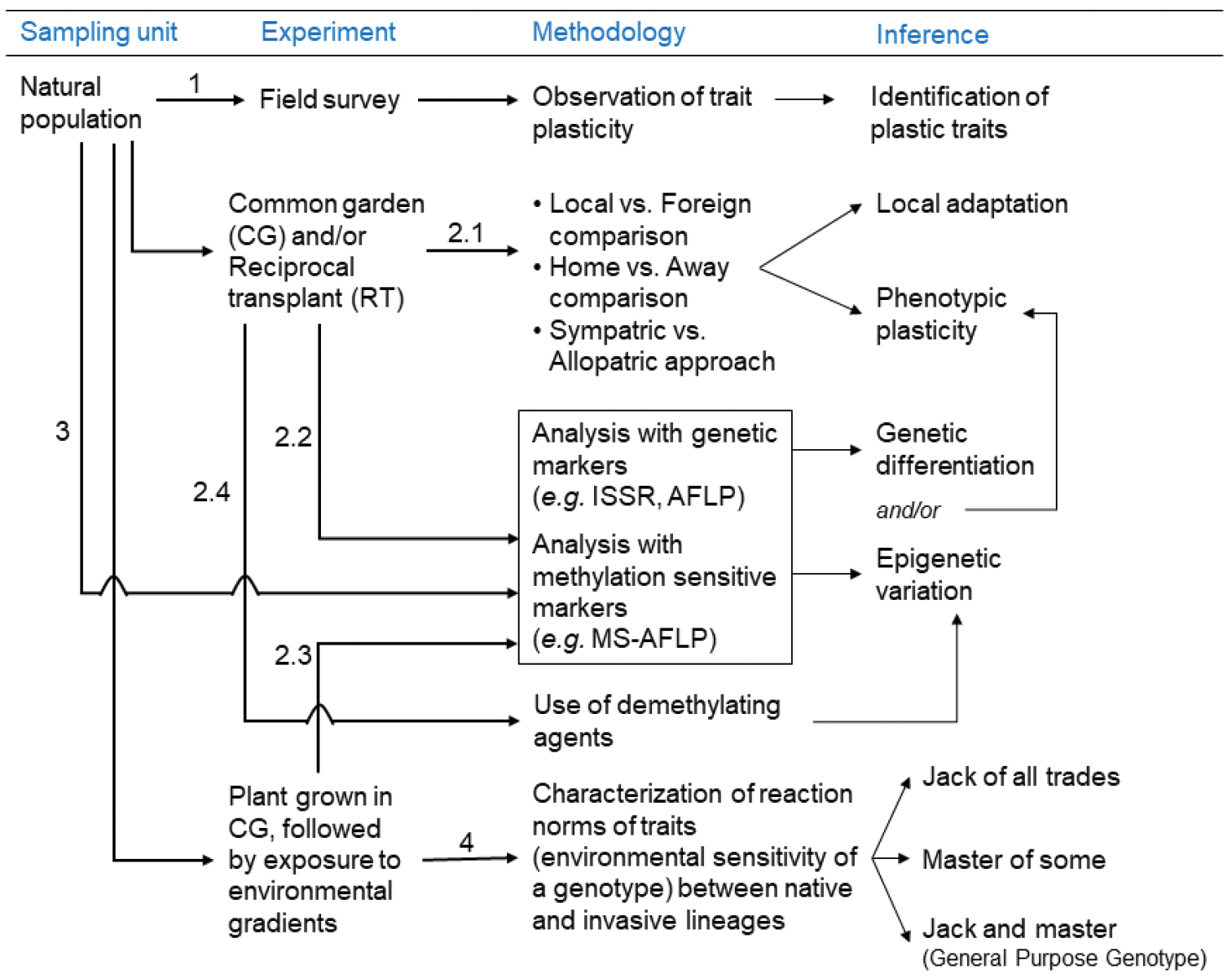
|
||
|
Experimental framework for differentiating genetic and epigenetic regulation of phenotypic plasticity. While a field survey of natural populations may identify plastic traits (1), reciprocal transplant experiments comparing performances of local and foreign populations may give insights into local adaptation, phenotypic plasticity and genetic differentiation as well (2.1). Plants grown in common garden experiments may be subjected to analysis with genetic and methylation-sensitive markers (2.2) or they can be exposed to environmental stresses before analysis (2.3) to identify genetic and epigenetic variation regulating trait plasticity. The use of demethylating agents (2.4) can also provide indirect evidence of transgenerational epigenetic inheritance. Samples from the natural population can also be analyzed with these markers followed by proper statistical analysis to disentangle genetic and epigenetic effects on trait plasticity (3). Characterization of reaction norms of the plants (e.g. comparison between native and invasive lineages) grown in common garden in response to environmental gradients (4) may highlight the trade-offs between maintaining a high performance across a range of conditions (robustness or jack of all trades) and maximizing fitness in an environmental condition (opportunism or master of some) or both (robust to environmental conditions and high performance, the general-purpose genotype). |